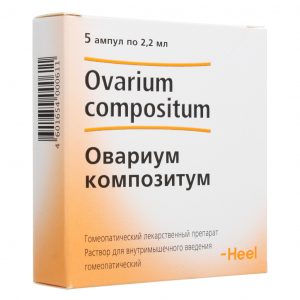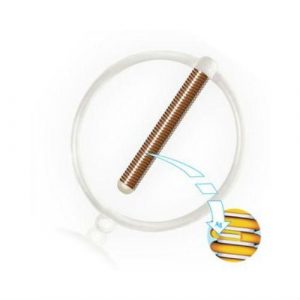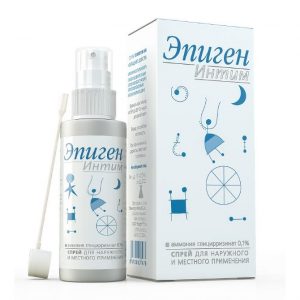Description
Latin name
Metrogyl
Release form
IV solution transparent, colorless to pale yellow.
Packaging
100 ml – polyethylene bottles (1) – cellophane wrappers (1) – packs of cardboard.
Pharmacological action
Metrogil has an antibacterial, antiprotozoal (trichomonacid) effect.
The nitro group of metronidazole is restored in anaerobic microorganisms and protozoa, interacts with the DNA of microorganism cells, inhibiting the synthesis of their nucleic acids, which leads to the death of bacteria.
Metronidazole is active against Trichomonas vaginalis, Gardnerella vaginalis, Giardia intestinalis, Entamoeba histolytica, Lamblia, anaerobic bacteria: Bacteroides spp., Fusobacterium spp.
In combination with amoxicillin, it is active against Helicobacter pylori (amoxicillin inhibits the development of resistance to metronidazole).
Aerobic microorganisms and facultative anaerobes are insensitive to metronidazole, but in the presence of mixed flora (aerobes and anaerobes), metronidazole acts synergistically with antibiotics effective against conventional aerobes.
Increases the sensitivity of tumors to radiation, causes disulfiram-like reactions, stimulates reparative processes.
When applied topically, it has an anti-acne effect whose mechanism is not exactly known.
Indications for
protozoal infections: extraintestinal amoebiasis, including amoebic liver abscess, intestinal amebiasis (amoebic dysentery), trichomoniasis, giardiasis, balantidiasis, giardiasis, cutaneous leishmaniasis, trichomonas sardinitis, trichomonas sarditis, vaginitis, trichomonas vaginitis, vaginitis sarditis, trichomonas sarditis, vaginitis, trichomonas sarditis, spp. (including Bacteroides fragilis, Bacteroides distasonis, Bacteroides ovatus, Bacteroides thetaiotaomicron, Bacteroides vulgatus): infections of the bones and joints, infections of the central nervous system, including meningitis, brain abscess, bacterial endocarditis, pneumonia, empyema and lung abscess
infections caused by species of Bacteroides spp., including the group B. fragilis, Clostridium spp., Peptococcus spp., and Peptostreptococcus spp .: abdominal infections (peritonitis, abscess liver), pelvic infections (endometritis, endomyometritis, an abscess of the fallopian tubes and ovaries, vaginal vaginal infections after surgery), infections of the skin and soft tissues
infections caused by species of Bacteroides spp., including the group B. fragilis, Clostridium spp .: sepsis
pseudomembranous colitis (associated with HAND antibiotics)
gastritis or duodenal ulcer associated with Helicobacter pylori
alcoholism prevention of postoperative complications (especially interventions on the colon, okolorektalnoy area appendectomy, gynecological surgery).
Contraindications
organic CNS lesions (including epilepsy)
liver failure (in case of high doses)
blood disease
pregnancy (I trimester)
lactation period
increased chu ity of metronidazole or other nitroimidazole derivatives.
Precautions – renal failure.
Use during pregnancy and lactation
I trimester of pregnancy – contraindicated in II and III trimesters of pregnancy – only for health reasons
Nursing mothers – according to indications with simultaneous cessation of breastfeeding.
Composition
1 ml1 vial
metronidazole 5 mg500 mg
Excipients: sodium chloride, citric acid (monohydrate), sodium hydrogen phosphate anhydrous, water d / i.
Dosage and administration of
I / v administration of the drug is indicated for severe infections, as well as in the absence of oral administration.
Adults and children over 12 years of age – in an initial dose of 0.5-1 g iv drip (duration of infusion – 30-40 minutes), and then – every 8 hours at 500 mg at a rate of 5 ml / min. With good tolerance, after the first 2-3 infusions, they switch to jet administration. The course of treatment is 7 days. If necessary, iv administration is continued for a longer time. The maximum daily dose is 4 g. According to the indications, a transition to a maintenance oral intake in a dose of 400 mg 3 times / day is carried out.
Children under the age of 12 are prescribed according to the same scheme in a single dose – 7.5 mg / kg.
With purulent-septic diseases, 1 course of treatment is usually performed.
For preventive purposes, adults and children over 12 years of age are given iv in a drip of 0.5-1 g on the eve of surgery, on the day of surgery and the next day – 1.5 g / day (500 mg every 8 hours). After 1-2 days, they switch to maintenance therapy inside.
In patients with chronic renal failure and CC less than 30 ml / min and / or liver failure, the maximum daily dose is not more than 1 g, the frequency of administration is 2 times / day.
Side effects of the digestive system: diarrhea, loss of appetite, nausea, vomiting, intestinal colic, constipation, metallic taste in the mouth, dry mouth, glossitis, stomatitis, pancreatitis.
From the nervous system: dizziness, impaired coordination of movements, ataxia, confusion, irritability, depression, irritability, weakness, insomnia, headache, convulsions, hallucinations, peripheral neuropathy.
Allergic reactions: urticaria, skin rash, flushing of the skin, nasal congestion, fever, arthralgia.
From the urinary system: dysuria, cystitis, polyuria, urinary incontinence, candidiasis, staining of urine in red-brown color.
Local reactions: thrombophlebitis (pain, hyperemia or swelling at the injection site).
Other: neutropenia, leukopenia, flattening of the T wave on the ECG.
Drug Interaction
Metrogil ® is not recommended for mixed administration with other medicinal products.
Increases the effect of indirect anticoagulants, leading to an increase in the time of prothrombin formation.
Ethanol intolerance is similar to disulfiram. Concomitant use with disulfiram can lead to the development of various neurological symptoms (appointment interval of at least 2 weeks).
Cimetidine inhibits metronidazole metabolism, which can lead to increased serum concentrations and increased risk of side effects.
The simultaneous administration of drugs that stimulate enzymes of microsomal oxidation in the liver (phenobarbital, phenytoin) may accelerate the elimination of metronidazole, resulting in a decrease in its plasma concentration.
When co-administered with lithium, plasma concentrations of the latter and the development of intoxication symptoms may increase.
It is not recommended to combine with non-depolarizing muscle relaxants (vecuronium bromide).
Sulfanylamides enhance the antimicrobial action of metronidazole.
Storage conditions
Store in a dark place out of the reach of children at a temperature not exceeding 30 ° C. Do not freeze.
Shelf life
3 years. Do not use after the expiration date printed on the package.
Terms and conditions
prescription
Formulation
infusion solution
Unique Pharmaceutical, India




